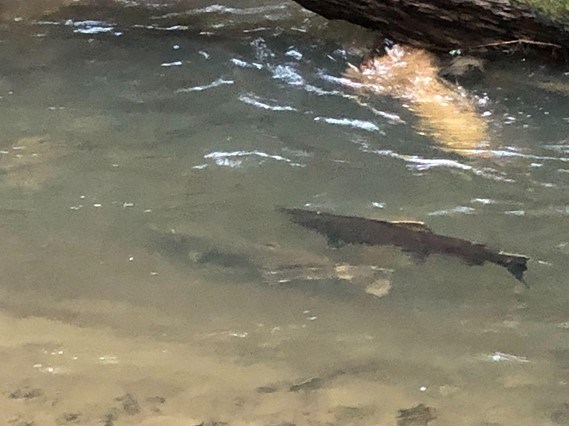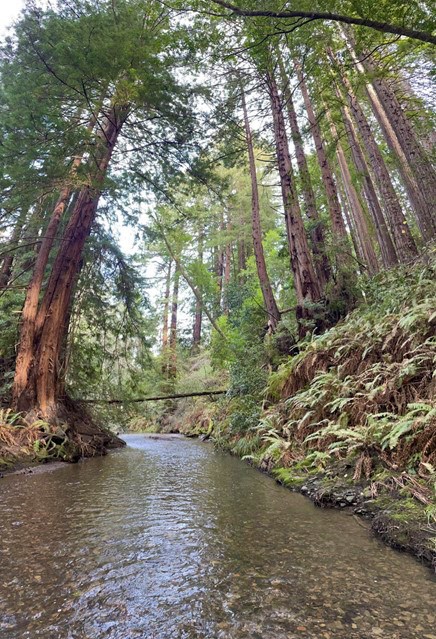Last updated: February 3, 2022
Article
Coho Continue Recolonizing Pine Gulch Creek After Long Hiatus

WSP / NPS / Tara Blake
By Tara Blake and Natale Urquhart
January 2022 - Coho salmon have a unique, three-year life-cycle which culminates in a return to their natal freshwater stream to spawn. Individuals that return in the same season make up what is called a cohort. Naturally, there are three genetically distinct cohorts within a population. This spawner season, the coho and steelhead monitoring team is seeing a cohort of coho in Point Reyes National Seashore's Pine Gulch Creek that we haven't seen in over a decade!
Pine Gulch is thought to have supported salmon in the past based on historic accounts and the characteristics of the stream, but biologists didn't find any during surveys in the 1980’s or 90’s. The earliest contemporary coho observations in Pine Gulch came in 2001. Coho remained present in Pine Gulch until 2010 when they were once again extirpated from the stream. Low numbers and a lack of resilience against environmental pressures surfaced as likely factors in their disappearance. But, last winter (2020-2021), the monitoring team found a coho cohort in Pine Gulch for the first time since 2010. That makes this the second year in a row that an extirpated cohort has returned.

WSP / NPS / Tara Blake
This natural recolonization of Pine Gulch is encouraging to see. These salmon likely originated from nearby streams such as Lagunitas Creek or Redwood Creek and strayed into Pine Gulch. However, there is no guarantee they will be able to survive and sustain a population long-term. For coho to steadily recolonize Pine Gulch, it would require regional salmonid runs to remain strong, thus increasing the likelihood of more fish straying into this watershed. Still, if climate conditions remain conducive for juvenile rearing and high ocean survival, we just might see members of this cohort return to spawn in Pine Gulch again in three years!
For more information
- San Francisco Bay Area Network Salmonid Monitoring webpage
- Pacific Coast Science & Learning Center Coho & Steelhead webpage
- Contact Fishery Biologist Michael Reichmuth
See more from the Bay Area Nature & Science Blog
